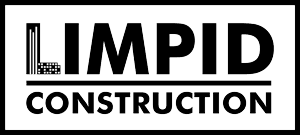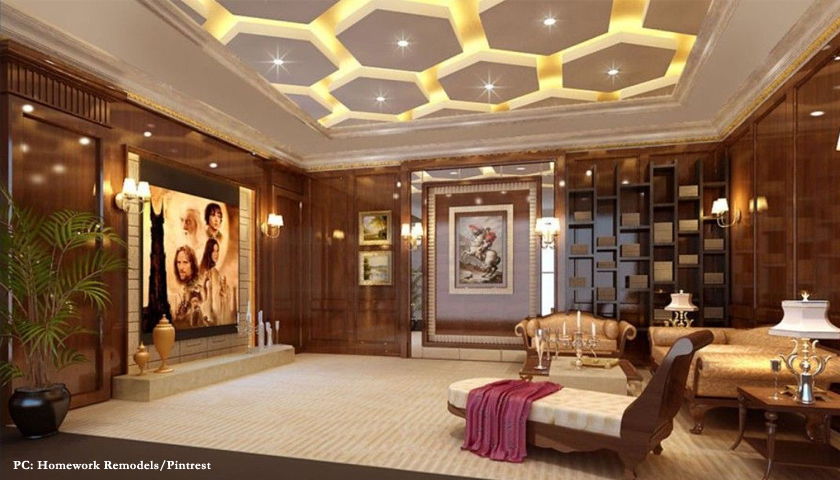False Ceilings have become an integral part of home interiors. It all started up with simple POP decorative moldings, which were added on the sides of the ceiling and over the base of fans and chandeliers. The homeowners installed these elements to exhibit their aesthetic sense by creating attractive false ceilings using decorative ceiling panels that can please the eye.
Today, false ceilings not only add beauty to the home but also keep away excess cold, heat, and noise from your abode. They provide space for housing electric wires, pipes, and air-conditioning ducts. False ceilings can reflect and diffuse light reducing the need for unnecessary artificial lighting thus lowering energy consumption. Some ceiling panels offer fire safety and moisture resistance features as well. Now, let’s discuss what are the types of false ceiling materials available in the market and which suits you the best.
Popular False Ceiling Material
- Gypsum False Ceiling – Gypsum is a hydrated sulfate of calcium and is used in the construction of lightweight ceilings. Gypsum boards can be hung from an iron framework to build a false ceiling. The aesthetic looks of gypsum boards can be enhanced by finishing them with laminates and paints. Gypsum boards are easy to install and clean, these boards can provide a seamless look and can easily provide different shape and texture options – plain, curved, stepped, etc. However, If moisture seeps into gypsum boards through leaking roofs or air conditioning pipes. This could result in fungal growth in the ceiling or even cause de-shaping of the boards. To avoid this, opt for moisture-resistant boards. Gypsum boards are expensive than POP but deliver a good finish almost effortlessly. The most popular brand for gypsum that architects widely use is Gyproc by Saint Gobain.
Best for Living rooms, bedrooms, and kitchen.
Gypsum False Ceiling
- Plaster of Paris (POP) False Ceiling – POP is among the most popular materials used in a variety of commercial as well as residential roofing applications. POP is maintenance-free and highly durable besides being good insulators of cold and heat. The material can be used along with another false ceiling material like wood or glass for an unmatched, contemporary appeal. POP false ceilings can give different finishes including uniform and smooth finish as well as designs of various shapes It is also an excellent material for enhancing light conditions. The major drawback of POP is its tendency to crack over time. Although POP is 25-40 percent cheaper than gypsum boards, until and unless skilled labor is working on a POP design, the finesse with which gypsum boards are manufactured cannot be achieved at the site.
Best for Living rooms and bedrooms.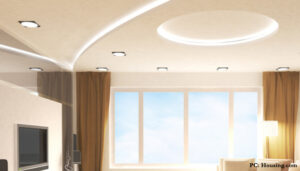
POP false ceiling
- Fibre False Ceiling – Also known as acoustic or soundproofing ceilings for their sound and heat insulation properties which are achieved by mixing natural and synthetic materials. Because of the fiber reinforcements, the ceiling tiles acquire strength and resistance to fire-making them highly suitable for commercial applications in noisy places. Fiber false ceilings (essentially perforated plasterboard) are low costs, can be installed easily, and offer many functional benefits (tiles can be easily removed and replaced for carrying any maintenance works). However, fiber ceiling panels are not suitable for residential applications because they lack aesthetic appeal.
Best for Offices and showrooms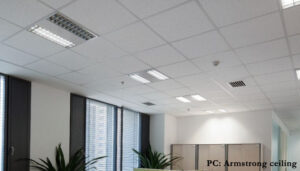
Fiber board ceiling
- PVC False ceiling – PVC ceiling panels are a highly cost-effective alternative to other costlier panels. These panels are easy to install and maintain. They are lightweight and resistant to moisture and termites. They do not get affected by UV light and hence are colorfast. They can also be finished in a variety of ways giving flexibility in design. PVC panels come in finishes with wooden patterns and new age graphical designs. Also, the factory-made panels offer a clean and smooth design finish.
Best for Garages, basements, kitchens, toilets, and bathrooms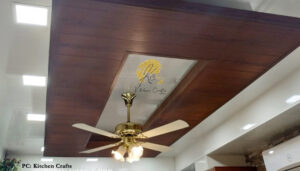
PVC false ceiling
- Metal False Ceiling – Though galvanized iron and aluminum are industrial-looking materials, when polished and used as a false ceiling, they can be a visual treat. These ceiling panels can be installed easily and require very little maintenance. They can also be easily removed and reinstalled which makes it ideal to house water pipes, AC ducts, and electric wires away from public glare.
Best for Industries, hospitals, and schools.
Metal Ceiling
- Wooden False Ceiling – When the ceiling has wooden beams it gives the house a warm, rustic look. Wood is a good material to work with. Wooden panels can come in the form of hollow blocks, boards, or panels. They are easy to install often with just screws and nails. They are most suitable for cold climates. They are durable but are susceptible to termite attacks and warping. Wood panels are among the more expensive panels because of their high cost of material and the higher cost of maintenance.
Best for Living Rooms
Wooden Ceiling
Useful Tips
- You can save on budget by choosing a gypsum board and creating a simple peripheral design. Add false ceiling only as borders to the existing ceiling. This way, you can retain the main ceiling height at most places while still introducing a design feature.
- In the market, many times suppliers, contractors, and homeowners might use the term POP and gypsum interchangeably — referring to gypsum panels as POP ceiling. Gypsum is the default material that contractors use, the term ‘POP ceiling’ could also be used to refer to POP decorative moldings, which come at a very low cost in comparison to a complete gypsum false ceiling.
Questions?- I’d love to help. Get in touch with us, today.
Author- Sagar Sohani
Civil Constructions, Home Interiors & Renovations!
To know more about our team and our services, please click here
To read more of such interesting blogs, please click here
